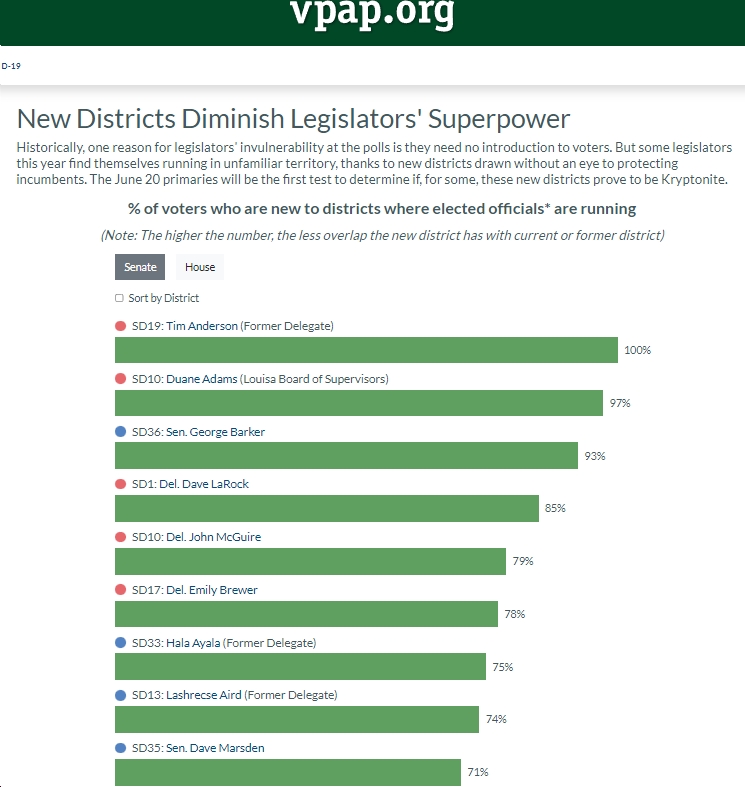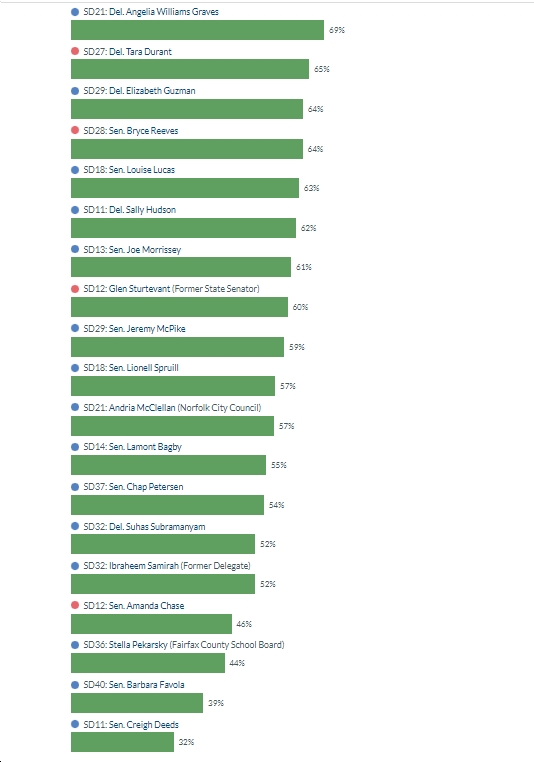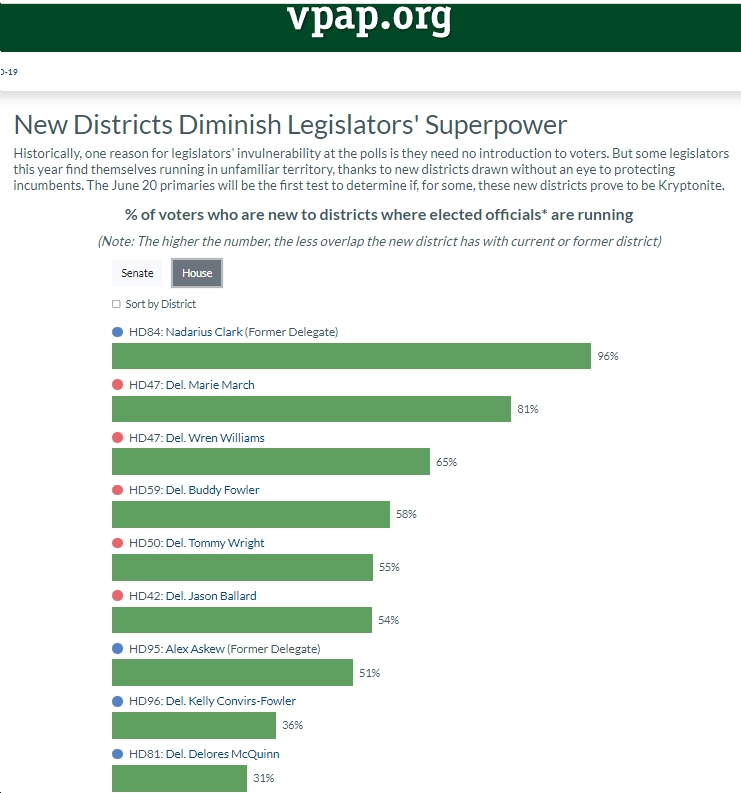These are really helpful graphics by VPAP, showing the “% of voters who are new to districts where elected officials* are running (and, VPAP notes, “The higher the number, the less overlap the new district has with current or former district”).
For instance, in former Del. Tim Anderson (R)’s case, he’s running in a State Senate district which has 100% “new” voters compared to his former House of Delegates district. In contrast, only 32% of voters are “new” to Sen. Creigh Deeds, while 54% are “new” to Sen. Chap Petersen, 57% are “new” to Sen. Lionell Spruill, 61% are “new” to Sen. Joe Morrissey, 63% are “new” to Sen. Louise Lucas, 71% are “new” to Sen. Dave Marsden, 93% are “new” to Sen. George Barker, etc. So, in thinking about which candidate in a Democratic or Republican primary might have the better chance of winning, look at a number of factors, such as how much money they’re raising, and also take into account how many voters have been represented previously by (and quite possibly voted for) the candidate – their “superpower,” in other words.

















